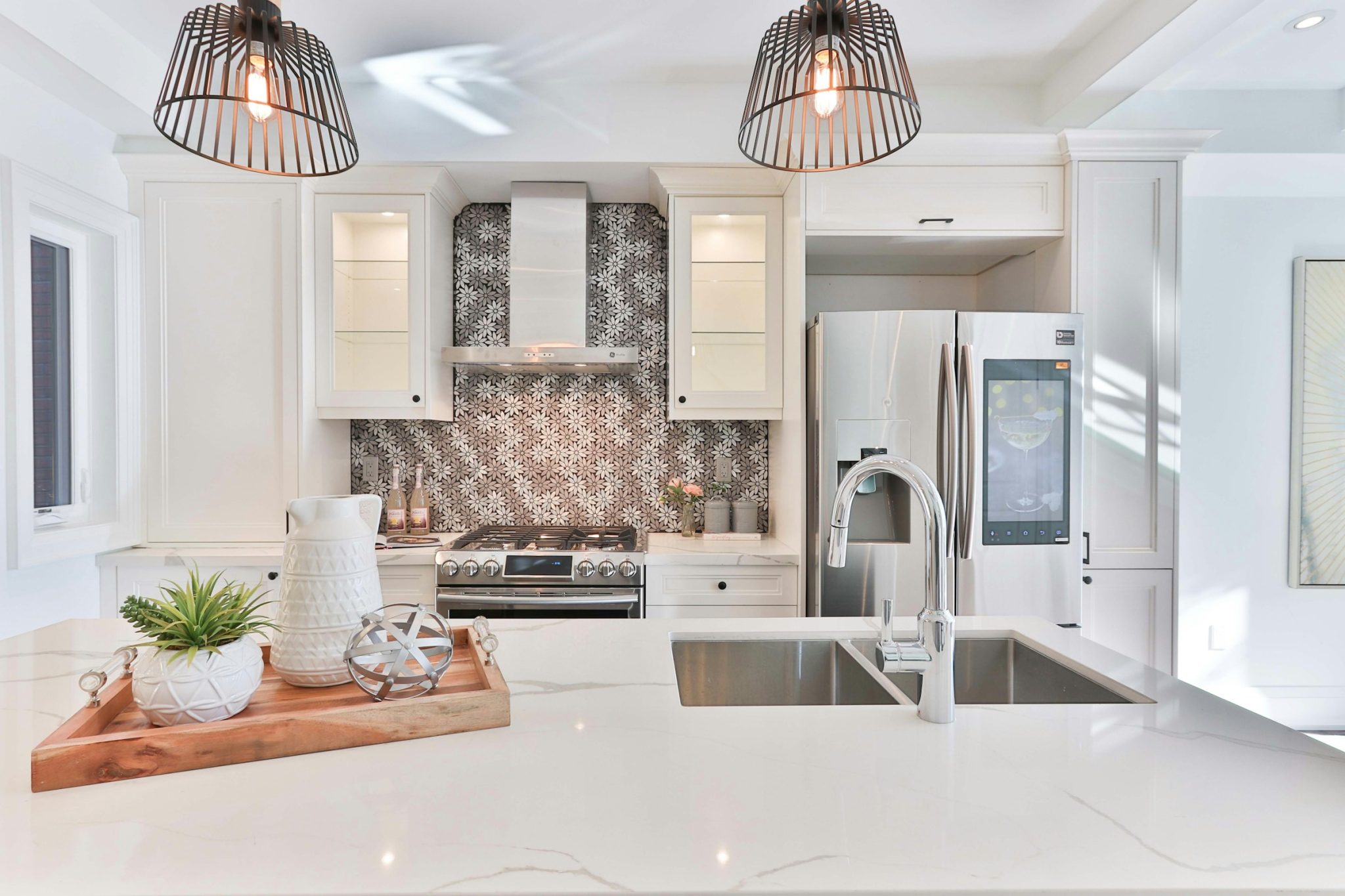If you’re planning a kitchen remodel, one of the most important factors to consider is the layout and workflow. An efficiently designed kitchen can save you countless steps, reduce frustration, and make meal preparation an absolute breeze. The key to unlocking this kitchen nirvana? Mastering the work triangle.

The work triangle is the gold standard for kitchen design, and for good reason. By strategically positioning your three main workstations — the sink, stove, and refrigerator — in a triangular layout, you can minimize the distance you travel while cooking, cleaning, and storing food. This simple concept has endured for decades because it works. A well-executed work triangle makes your kitchen function like a finely-tuned machine.
Of course, actually achieving that perfect workflow is easier said than done. There are a lot of factors to weigh when designing your kitchen’s work triangle. However, when you order a kitchen remodel in Plano from professionals, you can be sure that they will help you choose the best options. Let’s dive in and explore everything you need to know.
Table of Contents
Sizing Up the Triangle
The optimal work triangle should measure between 12 and 26 feet in total. That may sound like a wide range, but it allows for flexibility based on the size of your kitchen. The key is to make sure no individual leg of the triangle exceeds 9 feet. Any longer, and you’ll start to feel like you’re running laps around your kitchen during meal prep.
It’s also important to consider the placement of your triangle in relation to the rest of your kitchen. Ideally, the workstations should be clustered together, with a clear and unobstructed path between them. Avoid positioning the triangle where it might intersect with high-traffic areas, like entryways or dining spaces. You want an efficient workflow, not a traffic jam.
Factoring in Functionality
Of course, the work triangle isn’t just about minimizing distance. You also need to think about the specific functions of each workstation and how they interact.
- The sink is the hub of your kitchen, so it should be positioned between the stove and refrigerator for maximum efficiency. This allows you to easily rinse, prep, and transfer ingredients as you cook. The sink should also have ample counter space on both sides for staging and sorting.
- The stove or cooktop should be within reach of the sink, but not so close that it creates a safety hazard. Aim for 4-6 feet of clearance, which gives you enough room to move around without risk of burns or spills. And be sure to leave at least 15 inches of counter space on the handle side of the stove for easy plating and serving.
- Placing the refrigerator at the third point of the triangle completes the cycle. You’ll want it located close enough to the sink and stove that grabbing ingredients is a breeze, but far enough away that the workflow isn’t disrupted. A distance of 4-9 feet is generally recommended.

Customizing the Details
Of course, no two kitchens are exactly alike. While the basic work triangle principles remain the same, you’ll need to tailor the layout to suit your specific needs and the size/shape of your space.
For example, in a galley-style kitchen with limited square footage, you may need to get creative. Instead of a traditional triangular layout, you could opt for a “zone” approach, with the sink, stove, and fridge clustered together on one side and prep/storage areas on the other. This maintains an efficient workflow without feeling cramped.
Corner kitchens also require some finesse. By positioning the sink in the corner, you can create two distinct “arms” of the triangle on either side. Just be sure to leave enough clearance for cabinet doors and traffic flow. You can find more tips for corner kitchens here.
And don’t forget about secondary workstations. Many modern kitchens feature a prep sink, wine fridge, or coffee station in addition to the main triangle. When planned properly, these extras can enhance your kitchen’s functionality without compromising the core workflow.
Bringing It All Together
Ultimately, nailing the work triangle in your kitchen remodel is all about striking the right balance. You want a layout that maximizes efficiency and flow, without sacrificing access, safety, or aesthetics.
It’s a delicate dance, to be sure. But with careful planning and a keen eye for detail, you can design a kitchen that’s not just beautiful, but an absolute joy to work in. So the next time you’re elbow-deep in meal prep, you’ll be grateful for those well-placed appliances and thoughtful traffic patterns.
At the end of the day, that’s the true mark of a successful kitchen remodel — a space that intuitively supports the way you cook, clean, and entertain. With the work triangle as your guide, you’re well on your way to culinary bliss.
- About the Author
- Latest Posts
Whether she is researching the latest trends in home decor, life-changing destination getaways, or the best way to maintain your finances, Dewey takes pride in leaving no stone unturned. She is passionate about distilling and delivering high-quality information that you can use to upgrade your life.

